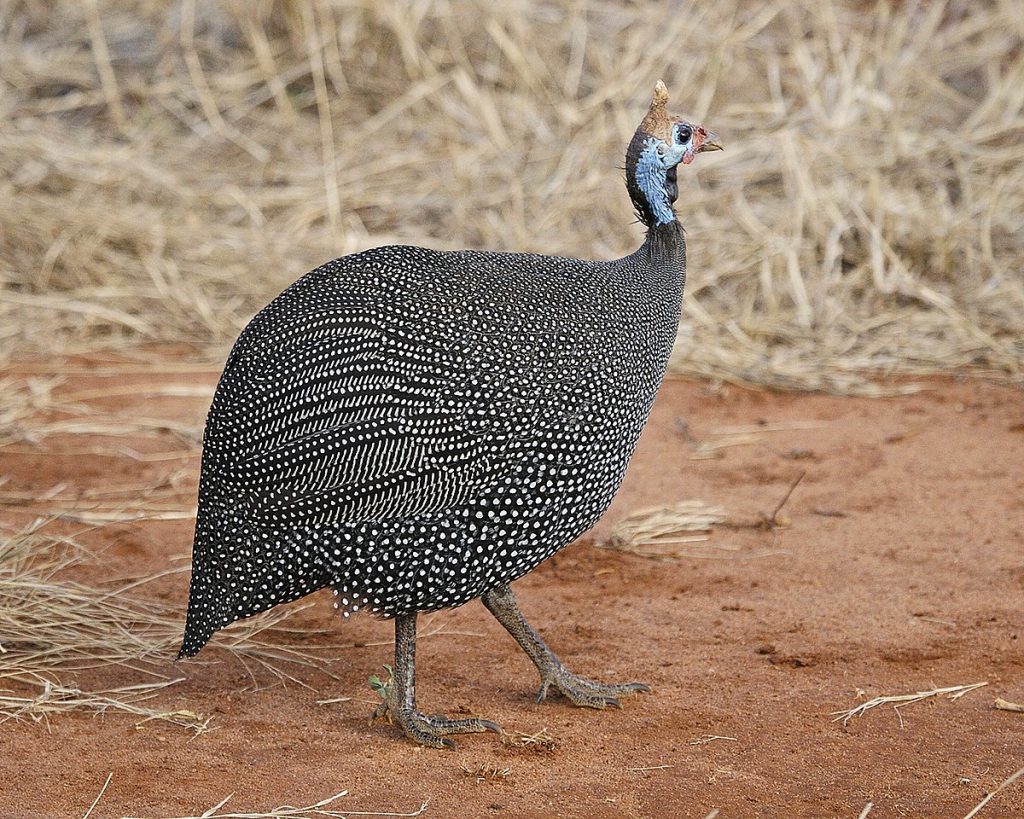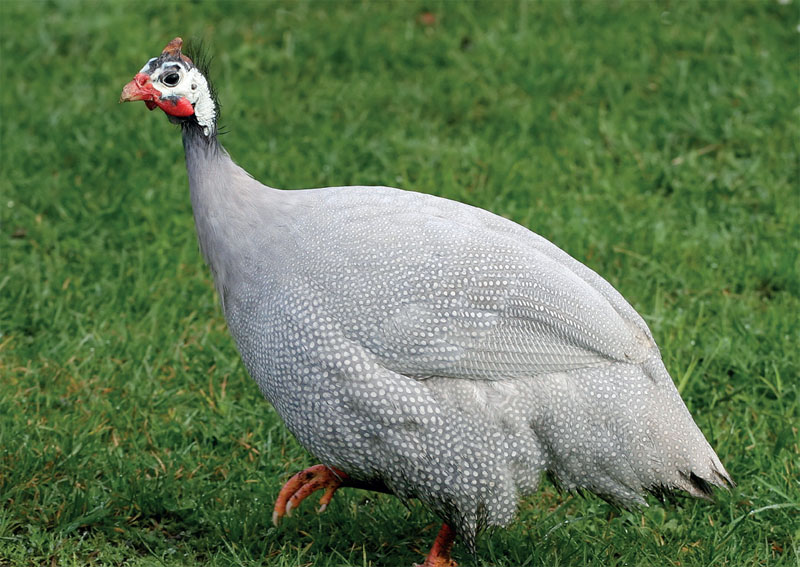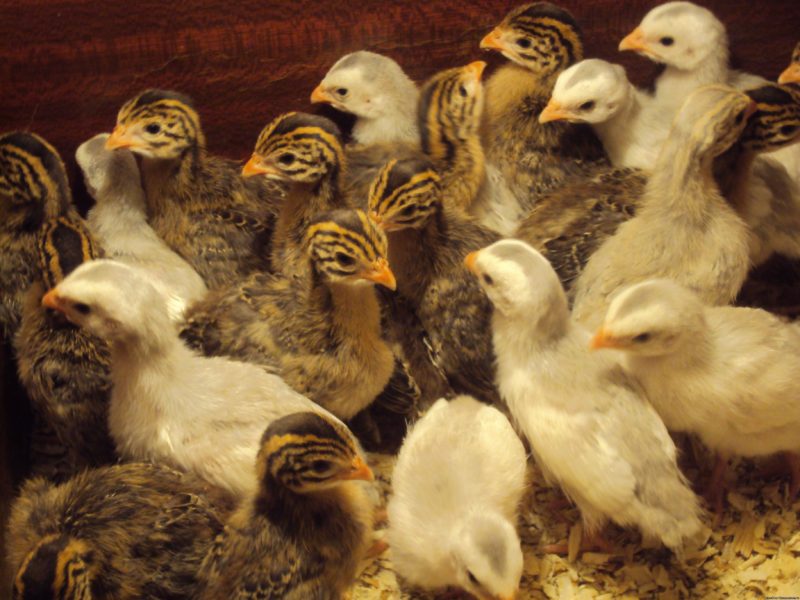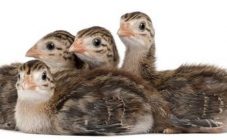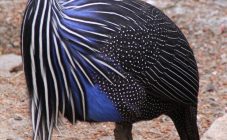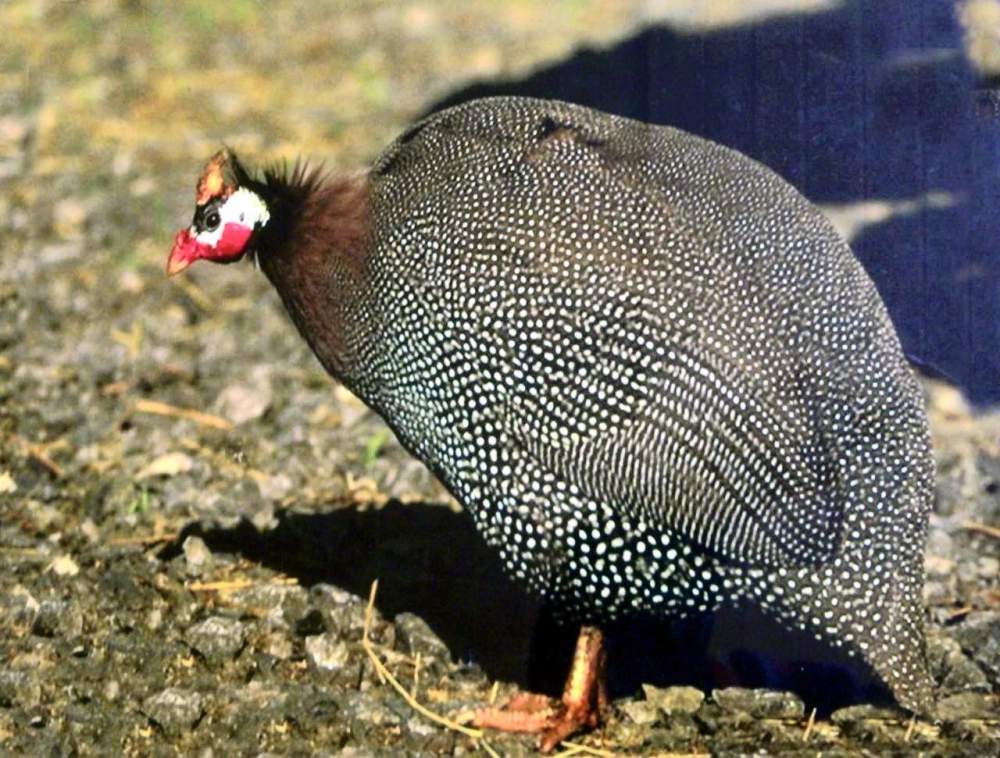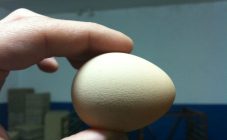Content:
Pharaoh or African chicken, royal bird - under these names it goes by the same bird - guinea fowl. She comes from Africa, Europe met her back in ancient times, when Roman legions brought her from the African campaigns. But then, with the fall of Rome, the population of this bird in Europe was practically destroyed.
It was reintroduced to Europeans by Portuguese navigators about 500 years ago. And since then, she has been one of the most popular birds among Europeans and Americans. But among the Russians, it did not receive much distribution, although the first copies were delivered to our country in the 18th century. But, as statistics show, the situation has been improving lately.
Initially, these birds were bred only in the courtyards of influential persons as decorative - hence the name - "royal". Today, the guinea fowl is a common poultry. In nature there are 7 species of this amazing bird, but only one has been domesticated - the common pearl. On the basis of this type, breeders bred guinea fowl domestic breeds. So, guinea fowl - what kind of bird and how to care for it will be described later.
Description
Despite the fact that the domestic guinea fowl is called the African chicken, you cannot confuse it with the usual one. Although there is a similarity in physique.
What does a guinea fowl look like?
In a guinea fowl, the body is elongated, oval. Covered with thick and soft feathers. Many people compare it to a humpback chicken, which has a small head and a rounded body. In addition, the common guinea fowl is distinguished by its color.
On a large body, a rather short neck and a small head. Usually the neck and head are without feathers, covered with bluish skin. The plumage color is different - smoky blue, cream or brown. Such a variegated color favorably distinguishes the guinea fowl from other inhabitants of the poultry yard. Guinea fowl chickens have long, thick, powerful legs, they are neither feathered nor equipped with spurs.
Guinea fowl has a sharply curved beak, on the sides of which there are small reddish sideburns. In males, they are larger than in females. In the latter, they are slightly indicated. On the chin, the guinea fowl has a so-called beard.
In their behavior, birds are very comical, those who have heard the guinea fowls scream will agree with this. They are very sociable and make a zing.
Females and males have a high similarity, an inexperienced person is unlikely to distinguish between them. Although you can still distinguish:
- The female's head is much smaller than that of the male;
- The same is true for the beak, in the female it is small, neat in size, while the males boast a rather large beak;
- Males are slightly smaller;
- Males are very aggressive.
On average, the weight of a guinea fowl is no more than 1.5, if grown for meat, in a household an adult male grows to 1.6 kg, the weight of females can reach 1.7 kg. Experts say that guinea fowl meat is the best of poultry. This is confirmed by the cost - in Europe it costs 2-3 times more than chicken. Considering how many guinea fowls live, their weight rarely reaches 2 kg, although a separate hybrid of guinea fowls can grow even more in weight.
Poultry eggs are also eaten. They have a light brown tint, are somewhat inferior in size to chicken ones, on average weigh 44-48 grams.
Unlike chicken eggs, guinea fowl eggs are stored for a long time - at a temperature of 0-10 degrees, it does not lose its useful qualities for up to six months. Due to the strength of the shell, poultry eggs perfectly withstand long-term transportation. The only thing that upsets the owners of these amazing birds is the low egg production. From a laying hen, you can get about 90 eggs per season, which lasts about 5-6 months.
But the good news is that guinea fowls have the highest hatching rate at 86 percent. At the same time, the output of young animals is up to 55 percent. Due to the low prevalence in private farms, few know who guinea fowls are, and their eggs and meat are not so easy to buy in supermarkets.
Conclusion of young animals
For incubation, eggs are used whose weight is at least 40 grams. They must be regular in shape, light or dark brown in color. However, as a brood hen, the guinea fowl itself is of little use, although there are examples that it independently incubated its eggs. The thing is that this bird is very, very shy and in any situation that it considers dangerous, it easily leaves eggs. Therefore, ordinary chickens or a turkey are used as hens. Now many people prefer to use incubators as a kind of brood hen. All settings of the device are similar to the settings for hatching chicken chicks, only the humidity parameter should be slightly higher.
Experienced guinea fowl breeders for years advise a simple egg quality test before laying. It is done simply - two eggs are taken and lightly hit each other, listen carefully - if the shell of the eggs emits a rattling sound upon collision, there are microcracks in it. Hence, it is not suitable for the bookmark. Once again, hitting the eggs is easy. For those planning to have this wonderful bird, it is recommended that you first learn everything about guinea fowls.
How to care for young animals
The incubation period is 28 days. Caring for guinea fowl chicks is similar to caring for hen chicks. In the early days, guinea fowl chickens are kept in cardboard boxes, on the bottom of which paper, sawdust, peat are laid. Instead of a box, you can take a small cage. At first, the chicks of the guinea fowl are freezing, so we put a plastic bottle with hot water in the box, and so that the chicks do not get burned, the bottle is wrapped in a thick cloth. It is also imperative to arrange lighting, without additional light, the development of chicks is inhibited.
Newborn chicks are fed with chopped boiled eggs. They are often mixed with cottage cheese. After a couple of days, millet and greens can be added to this mixture. You can buy special food for newborn chicks in specialized stores. It is, of course, much more expensive, but it contains all the necessary trace elements and vitamins. And chickens grow faster.
Many beginners complain that in the early days they cannot accustom their chicks to the feeder. The thing is that in nature, the chicken taps lightly on the ground (feeder) with its beak, thus making it clear to the chicks that there is food here. We'll have to do the same - tap on the feeder. Naturally, not with a beak, but with your fingertips. You can also lightly dip the chicks in the water with their beaks.
From the second week of life, yeast, salt and fish oil can be introduced into the diet of guinea fowls. You need to be very careful with yeast and salt. From the third week, the diet expands - crushed wheat grain, boiled potatoes, root vegetables, greens are added - there should be a lot of it.
From the age of three months, the chicks are transferred to an adult diet.
Many poultry breeders teach chicks from the first days to live in a special aviary, where a place for sleeping and walking is provided. In the place for walking, the floor is sprinkled with sand, this is to teach the chicks to walk correctly. As they grow older, the diet of birds is replenished with small insects, so they are often attracted as a delicacy by the Colorado beetle, whose larvae they eat with appetite.
The aviary must be placed so that rain does not fall on the chicks. Otherwise, they may catch a cold. Keeping chicks with chickens is not recommended. The Caesars are fearful and aggressive, often start to fight. The difference in weight and growth rate of chickens gives young males an advantage.
In general, chicks start walking in the open air from 10-12 days, but the owner should make sure that in the first days the chicks do not walk on wet ground.
Features of growing poultry
From the first days the chicks show their “collectivism” - they usually move all together, in a flock, alternately making a sound if one of the comrades hesitated and got lost. The scream keeps them together. This distinguishes the guinea fowls from the chicks of other domestic birds.
To breed guinea fowl, it is important to observe the key condition - a warm place for keeping, while it is important to understand how many individuals it can accommodate. A small room or room can cause illness.
It is almost impossible to teach adult layers to fly into individual nests. In free-range laying hens usually arrange one or more common nests, where all layers of the flock lay their eggs. From itself, such a "nest" is just a depression in the ground, or somewhere in the bushes, under a canopy, etc.
Eggs are collected in the evenings, guinea fowls begin to lay in the morning and by lunchtime egg-laying reaches its maximum.
Important! Guinea fowls show aggression - they hiss and even try to peck at the egg collector.
Despite rumors, guinea fowls fly pretty well. Therefore, they are advised to clip their wings so that they do not fly away from the courtyard. If you are afraid to spoil the wing, you should install a fence at least two meters high around the enclosure, courtyard. More is desirable.
Among the laying hens, they try to reject those individuals that show a tendency to incubation. Although it should be said that there are very few such individuals.
Breeding guinea fowls is quite profitable, with the right approach, profits can be made very quickly.
